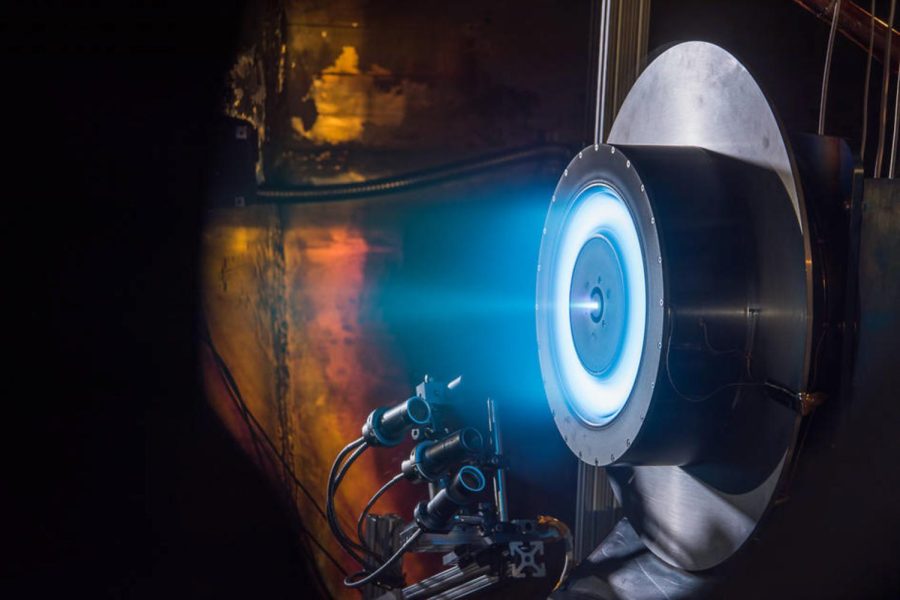The Mighty Power of Electric Propulsion
Prompted by the vision of sending humans to Mars and increasing our presence in space, technology is growing at a rapid rate to make electric propulsion a near-future reality. One area that is ever-growing is the technology surrounding propulsion systems on spacecrafts. Within the past five years, electric propulsion engines have been shown to be an efficient choice for in-space propulsion due to their low fuel consumption and reduction in size over the years.
Electric propulsion engines take electric energy and energizes gaseous particles. This is how the engines achieve thrust. Electricity can be converted from the sun’s light and, the required fuel can be easily stored; overall, the weight and cost of the craft are reduced.
Current propulsion engines are being used to undergo missions. A few notable ones in use are the 7-kW NEXT-C gridded-ion system and the 12-kW Advanced Electric Propulsion System. These are used for small maneuvers in the vacuum of space due to the next-to-no resistance against the thrust of the engine.
Recent work by NASA on electric propulsion includes the Small Spacecraft Electric Propulsion project. This project is looking to develop a sub-kilowatt (<1-kW) engine that will be fitted onto smaller spacecraft. The goal is to reduce the size of the engine from about the size of a car to one that can fit inside the trunk of a car. The reduction in size of propulsion systems results in a decrease in thrust. Researchers want to preserve the efficiency of the engine while compacting the design.
“It’s like asking a toy-sized car to drive across country with the same range and functionality of a full-sized passenger vehicle,” stated Gabriel Banavides, the lead engineer for the SSEP project.
The intention is to use these reduced engines as satellites in communication relays around the Moon, Mars or even the solar system. With the reduced size and weight, many can be packed onto one ship and be deployed in a few missions rather than have dozens of missions to set up a fraction of these satellites. This is the only main use of these engines, because the engines will not be able to produce enough thrust to overcome the drag of any atmosphere.
NASA is currently testing these engines for the SSEP project at their Electric Propulsion Laboratory in Cleveland, OH. The researchers in the project are using the facilities’ vacuum chamber to run tests over the next two years. The first expected mission for these engines is in 2024.




